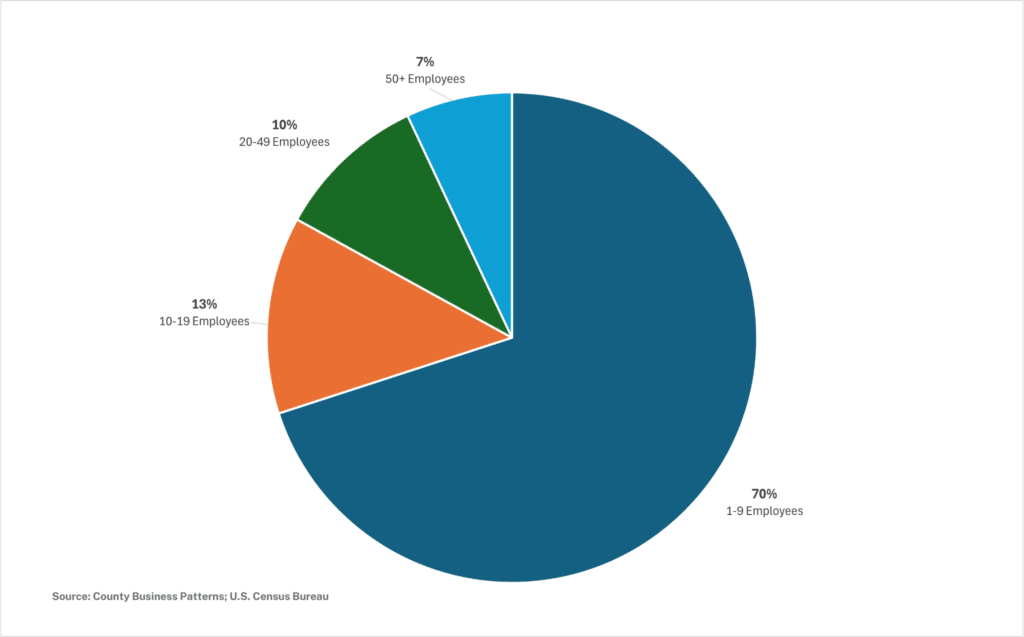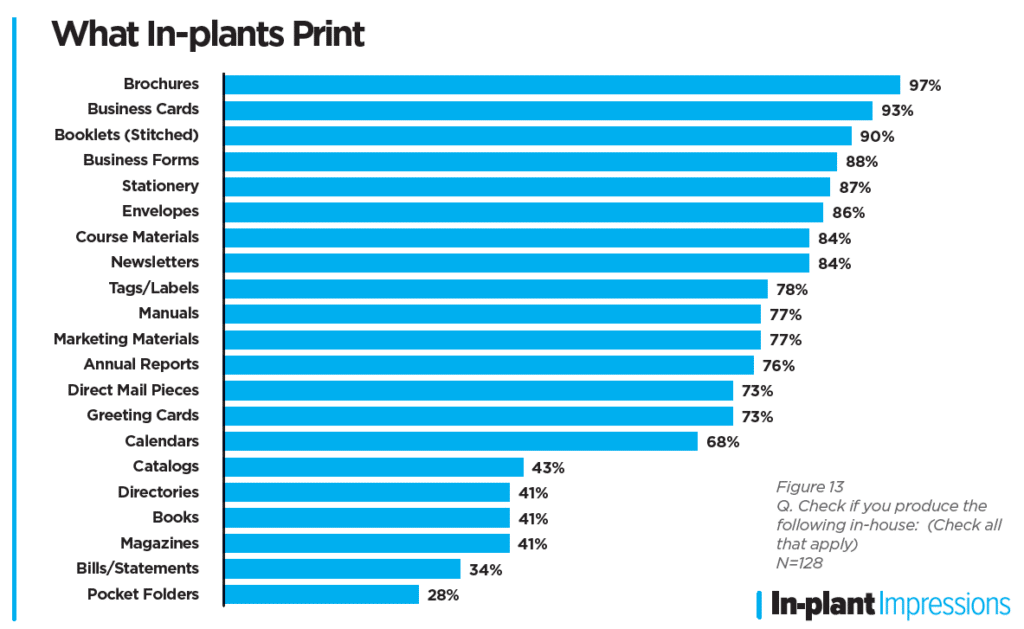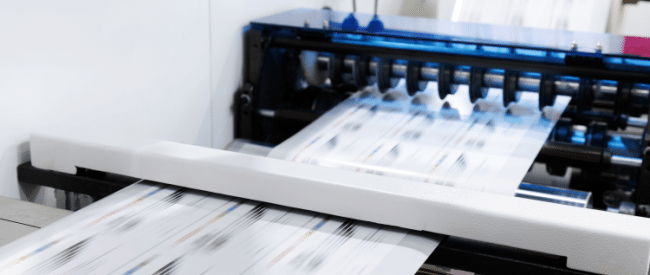Print and mail outsourcing lets companies ensure their customers receive billing statements and other transactional communications that are essential for driving cash flow and revenue but without having to invest in and manage print production and mailing operations themselves. While many companies narrowly focus on achieving the baseline benefits of outsourcing print and mail services, far-sighted organizations also realize more strategic advantages.
These leaders capitalize on reliable, high-quality print and mail outsourcing as a key lever for improving engagement and satisfaction at a critical stage of the customer experience—billing and payments. They also leverage print and mail outsourcing to accelerate their digital transformation, enabling their shift to cloud and automated technologies and processes that improve business flexibility, productivity, cost efficiencies, employee experience and effectiveness.
This guide explains how to increase success with print and mail outsourcing, whether the organization is seeking to replace a current vendor or to switch from in-plant print and mail operations.
It sets the stage by describing the current state of transactional communications and trends in print and mail outsourcing, both of which explain how traditional print and mail approaches are being surpassed by newer paper and digital communications innovations. It’s critical that organizations stay up-to-date with new transactional communications to meet customer expectations and stay competitive.
The guide then offers insights and information about establishing outsourcing goals, prioritizing benefits and defining other considerations when choosing a print and mail outsourcing partner.
State of transactional communications
Until recently, organizations had two ways to manage consumer transactional communications all of which were printed on paper:
- In person, such as signing an auto loan contract at the car dealership
- U.S. mail, including billing statements, reservation confirmations, and welcome kits and other onboarding materials
As a result, both in-house print and mail operations at some larger organizations and print and mail outsourcing flourished.
Newer digital technologies have shifted this paradigm. Electronic delivery options for bills, letters and other documents including email, text messaging, online portals and other electronic and mobile channels, have steadily grown in popularity with consumers. Nevertheless, print and mail still persists as a key preference for many consumers. Today, the name of the game is giving consumers choices on how they receive communications.
To learn more about the impact of these changes on companies and their customers, read our blog, Digital vs. Print Bill Presentment Solutions: Which Is Best for Your Customers?
What are Transactional Communications?
As the name implies, transactional communications are documents related to consumer transactions with businesses, such as medical treatment, utility services, insurance coverage and mortgage servicing. Many, but not all, transactions establish long-term business relationships that require recurring payments, from auto loans to homeowner association fees.
Transactional documents include billing statements, past-due notices, reservation confirmations, and explanations of benefits. They often contain sensitive financial data and personally identifiable information that companies must safeguard.
Regulatory and legal disclosures and other compliance customer correspondence, such as adverse action letters and annual privacy policies, are also transactional communications.
Additional customer communications may supplement transactional communications, including HOA governance and election documents, sales and marketing materials and ongoing interactions.
Print transactional communications remain essential
In an increasingly digital world, paper transactional documents mailed to consumers’ homes are not disappearing. At a minimum, some communications are legally required to be sent by U.S. mail.
But for the broad spectrum of bills, letters and other customer correspondence, print and mail remains a favorite of a substantial share of consumers. In the second half of 2023, ACI Speedpay Pulse found that 17% of consumers preferred paper statements and 27% wanted both digital and paper statements.
And for some customers, digital choices for critical communications aren’t reasonable options. According to a 2023 Pew Research Center survey:
- 1 out 10 U.S. adults do not have a smartphone
- 2 out of 10 do not subscribe to high-speed internet at home.
Among those without broadband, nearly one third of Americans say they can’t afford it, reported the U.S. Government Accountability Office in 2023.
It’s clear that statement printing and mailing continue to play a crucial role in strengthening brand reputation and customer experience and loyalty. Regardless of whether they prefer paper or digital, 81% of U.S. consumers feel they should have a choice as to how they receive important communications from their service providers, according to a 2023 survey by Two Sides North America.
The survey also found:
- 73% believe they should not be charged for paper bills or statements.
- 46% would consider switching to an alternate provider if their current one forced them to go paperless, up from 41% in 2021.
Technology reshapes print and mail outsourcing
Not only are digital technologies changing communications delivery and consumer behavior, but technological advances for creating, managing and printing customer mailings are transforming paper communications, making them more versatile, relevant and effective.
Collectively, these changes are reinventing the printing industry. As producing transactional communications has become increasingly complex, tech-driven, security- and privacy-focused and specialized, many smaller printers have chosen to diversify into other market segments. Smaller lettershops that print everything from signage to labels to books still make up most of the industry, with 7 out of 10 printers employing fewer than 10 people.

Smaller printers may be a strong option for companies sending hundreds or even a few thousand bills and other customer documents a month.
However, as companies grow from thousands to tens and hundreds of thousands and then to millions of bills, letters and other customer communications a month, they need scalable options and a more robust set of products and services that support strategic CX efforts.
For the most part, only the larger, innovative print and mail outsourcing firms have the deep investments, skills and experience to stay current with the latest capabilities and best practices for transactional communications. That includes being able to support strategic client efforts to deliver better CX and drive digital transformation of consumer billing and payments, including personalizing communications based on customer preferences.
For more information, download our white paper: The Power of CCM+Print: New Technologies Are Reinventing Paper Customer Communications
Shrinking in-plants give way to print and mail outsourcing
In-house print and mail operations face many of the same capability and cost constraints as smaller lettershops in keeping pace with transactional communications.
That hasn’t always been the case. Some companies, universities and other organizations needing high volumes of printed materials set up and successfully ran their own print and mail shops.
Starting around 2000, though, many enterprises with in-plants reversed course, choosing to outsource print and mail services so they could focus on their core operations. It is part of a broader business processing outsourcing trend when it comes to non-core operations, particularly in corporate America.
In 2007, there were 52,078 U.S. in-house print and mail facilities, down 2.5% from the year before, according to research by InfoTrends (now Keypoint Intelligence.) Since then, that number has dropped 20-25%, according to PCI Group.
The remaining in-plants, which are heavily comprised of universities and government agencies, have shifted away from transactional communications. Their top three applications are brochures, business cards and booklets, with banners and posters the most common output for wide-format printing, according to 2024 Trends and Services in the In-plant Industry.
With just 34% even printing transactional communications, they rank 20th among printed materials for in-plants, far below business forms, stationary, envelopes, course materials, and other items, according to the study.

Setting print and mail outsourcing goals
Given the changing landscape for transactional communications, companies should address both short-term needs and longer-term priorities when it comes to outsourced print and mail services. It’s a rare opportunity to rethink and reset a company’s critical customer communications strategies and programs.
Take care of immediate requirements
The impetus to outsource or find a new vendor may be triggered by day-to-day challenges. Some organizations could be at a break point, such as nearing the end of the useful life of their equipment and facing $1 million+ investment in a high-speed, dynamic variable color printer. Maybe they want a printing partner that can turn around communications changes faster or exchange communications data in multiple formats, including batch files and APIs.
Solving these immediate operational challenges means choosing a print and mail outsourcing firm that delivers best-in-class print and mail services. These print providers should have the latest high-speed, continuous-feed equipment that allows for color and personalization. They also should offer a host of mailing services, from the basics of bulk discounts to outbound services such as:
- Automated commingle and pre-sorting postal optimization and drop shipment logistics
- Live stamping, tabbing, metering or permit imprint, and in-plant load verification
- Fulfillment and assembly
- Automated match mailings and flats inserting
Look for outsourcers that provide an array of mailing services to improve delivery, using address databases and ACS™, a premium USPS service for in-route mail that adds the current delivery address. More advanced services include skip tracing, return mail processing, and automated Certified Mail options.
Choose a strategic partner
One important decision is the type of relationship the company wants—transactional or collaborative. Under a more collaborative and strategic approach, the print and mail outsourcer is a partner willing and able to help advance the enterprise’s strategies and operations for customer communications, including improving CX and driving cloud-enabled automation and other efficiencies.
Possible partners tend to be leading print and mail outsourcing companies that also bring a range of related solutions. The most important additional technology: A cloud customer communications management (CCM) platform for creating, producing and distributing transactional documents for multiple channels, including print/mail, email and text messaging.
Combining development and distribution of omnichannel communications on a single system simplifies managing different communication types—print, email, text—and delivery channels. In turn, it delivers significant ease of use for employees and other efficiencies. Importantly, it also can enable and accelerate strategic changes such as adopting a digital-first approach to transactional communications.
But CCM features and capabilities from print providers vary widely. Companies should evaluate how much control and agility each system gives them to run day-to-day operations, such as modifying documents and onboarding new communication programs. If they are less interested in self-service capabilities and want the print provider to handle changes or aren’t sure how much customer support they’ll need, companies also need to assess the customer service that is packaged with the system itself.
What’s the Right Scope: Print and Mail Outsourcing or Strategic CCM + Execution Solutions
Companies that have set out to replace their existing print and mail arrangement may not initially be open to the idea of a more comprehensive solution involving an omnichannel customer communications management (CCM) platform.
However, given the rapid changes underway in transactional communications and the need for companies to keep up to remain competitive, it’s worth taking a step back to reconsider the best way forward. After all, the company doesn’t want to find itself going through this process again in 3 to 5 years if the new choice can’t keep up with the business’ evolving needs for digital and print transactional communications.
Other print and mail outsourcing priorities
These qualities help round out how the print and mail outsourcer does business. Is it investing to build its expertise and operations to stay on top in its field? Does it deliver a first-class experience for its clients and their customers?
- Security: Applies strictest data security, regulatory and compliance standards, such as HIPAA and SOC 2 Type 2 certification.
- Business continuity: Multiple, redundant locations with similar equipment.
- Experience and growth: Proven track record, especially for meeting the needs of regulated industries, and growth with long-term, satisfied clients.
- Business fit: Partners must be comfortable working together which creates trust and improves collaboration.
For more information about critical capabilities and features, read our blog, Choosing a Print and Mail Outsourcing Partner: 9 Key Considerations.

Print and mail outsourcing benefits
Hand-in-hand with capabilities are the benefits a company expects to receive from a print and mail outsourcing partner. Here are some advantages that the right partner will provide:
Cost savings
This incentive is often why companies first turn to outsourcing. Clients benefit from economies of scale and the resulting lower per-unit costs as well as bulk mailing discounts.
Shifting from in-plant converts fixed costs to variable costs. Outsourcing eliminates the need for pricy equipment, hard-to-find skilled workforce and facilities necessary to produce modern transactional communications.
Capacity
Outsourcing gives companies the flexibility to scale up or down, as needed, with their transactional communications without sunk capital. Some print and mail outsourcers also bring complementary digital capabilities, enabling companies to add channels including email and text messaging or switch volume between channels to accommodate customer preferences.
Reliability
This non-negotiable manifests in a number of ways, including:
- consistent quality and on-time output
- redundant facilities and processes to ensure no missed mailings due to equipment, weather or other issues
- ample supplies of paper, ink and other materials despite any supply chain disruptions or changes
- experienced workforce that updates skills through training and development
Expertise
Top print and mail outsourcers are leaders, setting the industry pace and standardizing best practices so clients can upgrade their operations and customers’ experiences with transactional communications. They stay up-to-date on the latest trends and technologies for transactional printing and mailing, so their clients can too. Some also are branching out into digital production and delivery to offer a more complete solution.
Innovation
Leading providers develop or harness top-of-the-line cloud, automation, software and other technologies, including roll-fed equipment that prints up to 1,200 pages per minute, with in-line finishing, variable data and real-time personalization. They use the latest advances in ink chemistry, printhead technology, dryers, inserters, and folding machines for increased productivity and efficiency that delivers better output and service. Like tech leaders in other industries, some transactional communications experts differentiate their capabilities by investing in their own internal development and secure patents that highlight their innovations.
Effectiveness
High-performing print and mail firms help companies leverage the outsourcers’ strong points, including expertise, flexibility, scalability, innovation and reliability, to achieve the clients’ strategic transactional communications goals. It starts with establishing business requirements and continues through an automated feedback loop. Leading outsourcers provide detailed reporting and tracking tools so organizations can monitor and gain insights into their print and mail performance, then pilot new approaches to finetune programs.
For a deeper dive into major outsourcing benefits, check our the blog Six Key Benefits of Print and Mail Outsourcing.

Integrating with consumer payments
Consumer billing and payments are coalescing in new ways due to technology. Plenty of consumers receive mailed statements, then use their mobile phone to access their account on the company’s website and make a payment, for example.
In evaluating print and mail outsourcing partners, companies may want to put electronic bill presentment and payments (EBPP) on their checklist. Some providers are offering CCM, digital and print production and delivery and EBPP integrated into one solution. Companies benefit from managing the entire cycle of transactional communications and consumer payments on a single system with a single outsourcing expert.
To make a more informed decision, read the blog 6 Key Features to Look for in EBPP Solutions.

Maximizing the outsourcing opportunity
Juggling consumer demands for a variety of transactional communications, tailored to meet each meet customer’s preferences, is the new standard for corporate America. It’s a similar situation when it comes to consumer expectations for ease of use, convenience and choice in payments, especially digital and mobile.
Each channel poses challenges and opportunities, not the least is companies getting up to speed on newer digital interactions while fulfilling some customers’ preferences for print and mail. Nonetheless, the trends toward digital and away from print communications are real. As are other pressures on print and mail, including fast-rising postage costs. The U.S. Postal Service has raised the price of first-class mail multiple times since 2020, from 55 cents to 73 cents starting in July, 2024.
Outsourcing with a top provider of print and mail services that’s also an expert in digital communications and payments technologies offers companies the greatest flexibility and expertise to adjust their transactional communications programs quickly, as needed. The key is finding a partner that excels in all areas.
Looking for a print and mail outsourcing partner? Contact Nordis Technologies to learn more about efficiencies, cost savings and security we can deliver to your organization.



